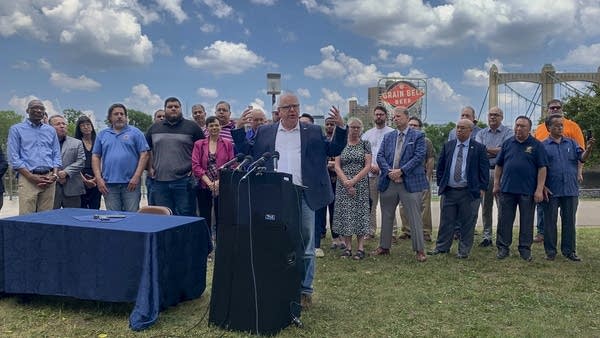Road fixes, wastewater upgrades and more: Walz signs $2.6 billion capital investment bills

Minnesota Gov. Tim Walz, joined by supporters, signed bills authorizing the largest bonding bill in state history in Minneapolis on Thursday.
Dana Ferguson | MPR News
Go Deeper.
Create an account or log in to save stories.
Like this?
Thanks for liking this story! We have added it to a list of your favorite stories.


